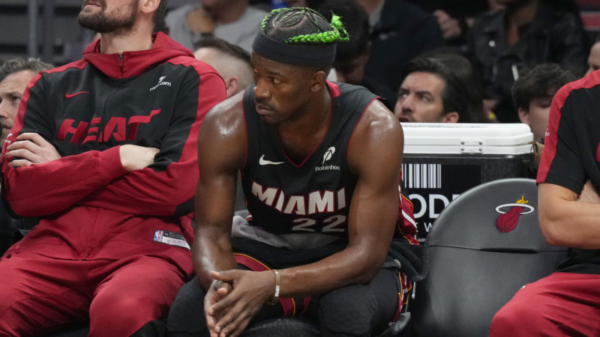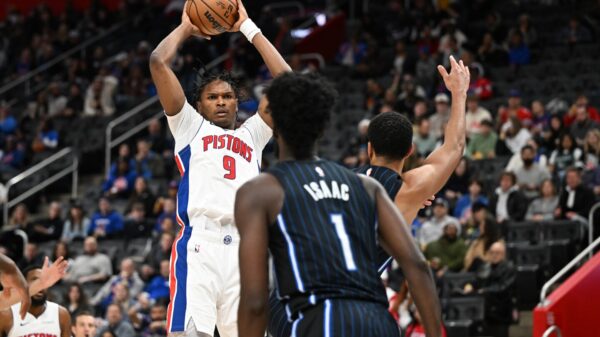On Friday, for the second consecutive night, the New York Yankees accomplished the improbable feat of scoring multiple runs off Cleveland Guardians closer Emmanuel Clase. Whereas New York’s efforts in Game 3 went for naught, as the Guardians mustered their own late-game heroics, the Yankees walked away with the victory in Game 4. Accordingly, the Yankees are a win away from the pennant and a trip to the World Series.
Clase, meanwhile, spiraled further into one of the most surprising slumps of the playoffs. He was impregnable during the regular season, surrendering five earned runs in 74 1/3 innings. Friday’s meltdown means that Clase has now yielded eight earned runs in seven October frames, with four of those runs coming within 24 hours.
Just what, precisely, is bugging baseball’s best closer? After taking a deeper look at his month after Friday, here are a few developments that might explain his October funk.
1. Cutter mutation
We noted as part of our coverage last night that Clase is dependent upon his cutter. He used it 77.8% of the time during the regular season; that usage rate, including Friday, is now at 75.7% for the postseason. While Clase’s reliance upon the cutter hasn’t changed, it is worth pointing out that the pitch’s movement profile has morphed.
Indeed, Clase’s average cutter during the ALCS has featured close to two additional inches of horizontal break than his average cutter during the regular season. Here’s a look at his month-by-month horizontal break data to contextualize the point:
|
April |
159 |
4.2 |
|
May |
151 |
3.7 |
|
June |
127 |
3.0 |
|
July |
103 |
2.8 |
|
August |
123 |
3.1 |
|
September |
94 |
2.4 |
|
ALCS |
28 |
5.1 |
Weird things can happen in a small sample size. Case and point, Clase’s favorite pitch is cutting more than it did during any individual month throughout the season by nearly a full inch. Is that intentional; is it because of the added adrenaline that comes with pitching in the playoffs; or has Clase inadvertently altered his grip or his release in a way contributing to the greater horizontal movement? We don’t know the answer.
It stands to reason that, if it’s an inadvertent change, Clase’s command of the pitch might not be as sharp as usual since it’s cutting more than he anticipates. What we can write, with confidence, is that it’s not the only change impacting his cutter this series.
2. Altered location against righties
Again, we pointed out last night that Clase’s preferred location for his cutter against right-handed batters during the regular season was on the inner half. Some pitchers deploy their cutters like sliders, throwing it over the middle and letting it work its way to the outer third or beyond. Not Clase; he likes to throw it inside and have it work back.
Clase, intentionally or otherwise, has altered that approach in this series. (Once more we feel obligated to state that this is a very small sample size and that just a couple pitches more would greatly alter these numbers in either direction.) Including Friday night, about a third of his cutters to right-handed batters have been located off the plate away; his regular season percentage was 21.5%. This ties back in with the first subheading noting that his cutter was moving a little more than usual.
Additionally, Clase’s vertical location has shifted against righties, too. About 32.5% of his cutters during the regular season ended up in the middle region of the zone vertically; so far in the ALCS, that percentage is up to 46.7%.
With those two microtrends in mind, take a look at where the seven cutters that Clase has given up hits on during the postseason have been located:
TruMedia
All middle of the zone vertically, and the majority away — the two places Clase is trending more toward this series against righties than he did the regular season.
Even so, there’s one other element we feel obligated to note.
3. Bad luck
We can hear you booing from the other side of the screen, but the point must be made. Clase has absolutely been subjected to a few bad breaks already this month. That continued on Friday, with Alex Verdugo hitting a weak squibber that shortstop Brayan Rocchio couldn’t handle.
For evidence, take a look at how Clase’s ball-tracking data stacks up:
|
Regular season |
86 mph |
2.4 degrees |
27.1% |
|
LDS |
85.7 mph |
6.8 degrees |
31.8% |
|
LCS |
84.8 mph |
8.5 degrees |
29.2% |
The one notable shift between the regular season and postseason has to do with Clase’s average launch angle: batters are finding it easier to lift him. That’s not a trivial development, and it likely stems from the aforementioned fluctuation in his location. A few degrees here and there might not seem like much, but it can make a difference.
To wit, the league as a whole hit .429 on batted balls that went 85 mph (to split the difference) and had a launch angle between 0 and 5 degrees during the regular season; comparatively, the league hit .444 on balls that had that same exit velocity but instead featured a launch angle between 6 and 10 degrees. That’s a few extra hits over a large enough sample.
We needn’t explain how large a few additional hits here and there can feel when it comes to a closer pitching in October; you’ve seen it for yourself the last few nights that it can be the difference between the best in the business and a pitcher inspiring these kinds of deep dives.
Read the full article here
























































